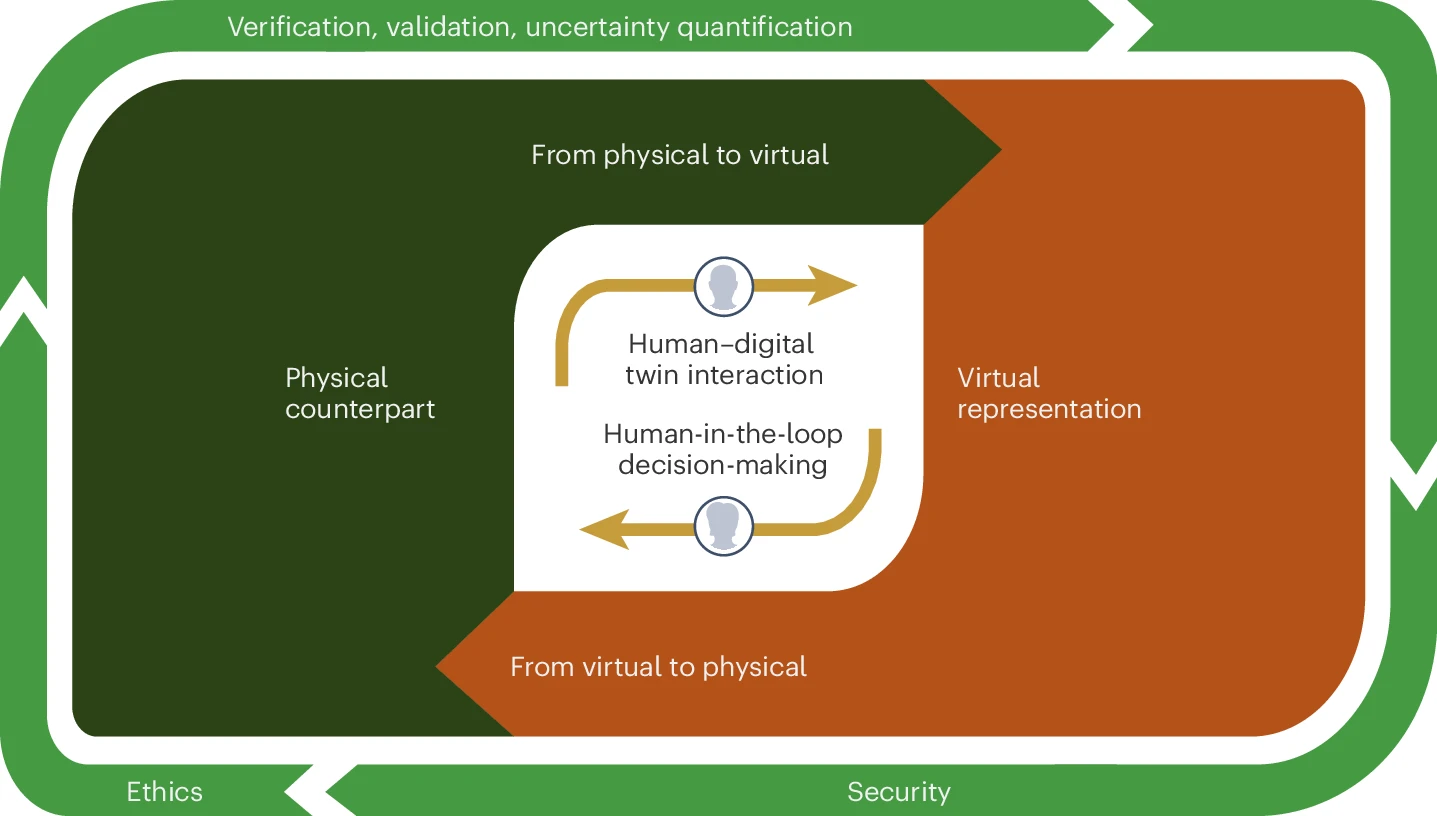Insider Brief
- Digital twin technology offers new ways to interact with the natural, engineered and social worlds.
- There are foundational gaps that need to be bridged by research investigations, to make digital twins a constructive reality.
- The researchers discuss several key areas where concerted research efforts are needed in making digital twin tech a practical, ethical and effective reality.
Digital twin technology offers the potential of creating new ways to interact with the natural, engineered, and social worlds.
However, researchers Karen Willcox, of University of Texas at Austin and Brittany Segundo, the National Academies of Sciences, Engineering, and Medicine, write in Nature that a recent report by the National Academies of Sciences, Engineering, and Medicine (NASEM) reveals the foundational gaps that need to be bridged to make digital twins a constructive reality. They add that numerous research opportunities lie ahead for scientists in the field.

Defining Digital Twins
According to the researchers, at its core, a digital twin is a virtual construct that mirrors the structure, behavior, and context of a physical system, whether it be a natural ecosystem, an engineered structure, or a social setup. This digital facsimile is not static; it evolves through dynamic data updates from its physical counterpart, offering predictive insights that drive valuable decision-making. The essence of digital twins lies in their ability to foster a two-way dialogue between the virtual and the physical, which promises to enhance understanding and control over complex systems.
Challenges and Opportunities
Despite the enthusiasm surrounding digital twins, a lot of challenges and obstacles remain on the path to the full realization of digital twin tech. The NASEM report identifies several key areas where concerted research efforts are needed:
- Virtual Representation: Bridging the vast scales of spatial and temporal dimensions that digital twins must encompass remains a daunting task. Achieving the necessary fidelity and precision for informed decision-making calls for significant advancements in computing resources and algorithms.
- Physical Counterpart Interaction: Digital twin technology depends on the seamless integration of real-time data, which often comes in varied formats and resolutions. Innovations in data processing, anomaly detection, and sampling methods are crucial to capturing the nuances of complex systems.
- Ethics and Security: As digital twins often deal with sensitive or personal data, ensuring privacy, data governance, and security is paramount. The development of these technologies must be accompanied by rigorous ethical considerations.
- Feedback Loops: Effective mechanisms for integrating physical observations with virtual models (and vice versa) are essential for the continuous refinement of digital twins. This necessitates breakthroughs in data assimilation, inverse problem solving, and machine learning techniques.
- Verification and Validation: Trust in digital twins hinges on rigorous testing and validation processes to quantify uncertainties and validate the accuracy of their predictions. This ongoing process is vital as both the physical and virtual components evolve.
The researchers comment on these challenges: “An important theme that runs throughout the report is the notion that the digital twin be “fit for purpose,” meaning that model types, fidelity, resolution, parameterization, frequency of updates, and quantities of interest be chosen, and in many cases dynamically adapted, to fit the particular decision task and computational constraints at hand. Implicit in tailoring a digital twin to a task is the notion that an exact replica of a physical asset is not always necessary or desirable. Instead, digital twins should support complex tradeoffs of risk, performance, computation time, and cost in decision making.”
Realizing the Promise
The NASEM report underscores that the realization of digital twins’ full potential will require a multidisciplinary effort, spanning mathematics, statistics, and computing. This effort must be both sustained and holistic, targeting not only the enhancement of models and algorithms but also addressing the ethical and practical challenges of implementing these systems in real-world settings.
The researchers say exploring digital twin technology is worth the effort: “Digital twins are emerging as enablers for significant, sustainable progress across multiple domains of science, engineering, and medicine.”
For a deeper exploration, see the researchers’ article in Nature and the NASEM report.
If you found this article to be informative, you can explore more current Digital Twin news here exclusives, interviews, and podcasts.













